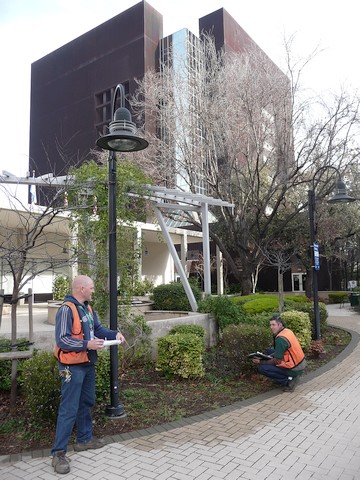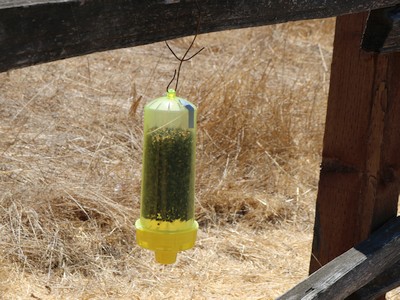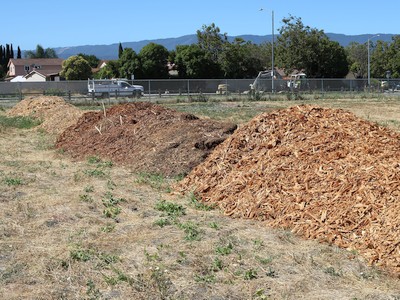Research
Planning and demonstrating reduced-risk pest management strategies is a ongoing and continuous process. Demonstrations and field trials on innovative ideas, products and services have become effective tools to train user groups.
IPM demonstration areas help to provide a hands-on education coupled with relevant, "real-world" examples of how new innovations and updates can fit in with the services that the County provides.
New practices are conducted and tested before being adopted on a larger scale. County-owned sites are used to conduct short-term trials. Pilot projects that prove to be successful are gradually adopted on county-wide basis and become an important tool in reducing pesticide use and exposure.
The IPM Program set up a collaborative research partnership with the Department of Entomology at UC Riverside to accomplish several goals: to develop bait matrices that are environmentally friendly, to investigate effective trapping techniques, and to develop monitoring and abatement protocols for the control/suppression of ground nesting yellowjackets, particularly in sensitive areas such as parks, schools and recreational areas.
The study showed that traps should be an integral part of yellowjacket management strategy. Traps may be used successfully to divert foragers in certain situations. However, they should primarily be used as monitoring devices to detect yellowjacket presence and intensity and to help determine if, and when, baiting is to be undertaken.
Through this study, substances with the most promise as yellowjacket bait were identified, including fresh and canned minced chicken and one particular canned fish-flavored pet food. Two pesticides were also identified as good candidates as active ingredients for yellowjacket baiting. The details of this study were included in a published paper presented at the 6th International Conference on Urban Pests by Donald A. Reierson, Michael K. Rust and Richard S. Vetter from the Departments of Entomology at University of California, Riverside.
The County has successfully completed a five-year study on the efficacy and cost-benefit of using rubber mulch (recycled rubber from waste tires) and wood mulch in controlling weeds in recreational and urban landscapes and rights-of-way.
Wider use of mulch is being phased-in for urban landscapes. The Departments of Parks and Recreation and Facilities and Fleet have applied weed barrier technology (rubber mulch, wood mulch and ground covers) to control weeds in several park renovation projects. Mulch use in urban landscapes and recreational parklands demonstrate reduced maintenance cost and minimize herbicide use
The Department of Parks and Recreation conducted a trial in 2005, in partnership with EcoSmart Technologies. Reduction of the product cost and formulation to increase the economic viability of its use was discussed with the manufacturer.
The product application under optimum conditions did provide total burnout of weeds in early stages (height 6-8 inches of plant growth). However, ongoing unusual weather and record rainfall in 2005-06 resulted in a setback for this project. Factors included issues related to timing of product application in early stages of weed growth and finding ideal weather conditions during the rainy season.
The desired outcome was to provide a cost-effective, viable alternative that would minimize the use of conventional herbicides on County owned right-of-ways. However, adoption of this product on a wide-scale is impacted by a limited seasonal opportunity for application, which reduces this product's overall effectiveness.
An experiment was conducted in Ed Levin Park in 2016 to evaluate if compost tea and its associated soil bacteria, fungus and mycorrhizae improve the soil conditions and degrade the Medusahead. Even though the treatment was not economically viable, a significant drop (86%) in percent cover of Medusahead was noted in the area mowed and then treated with compost tea.




